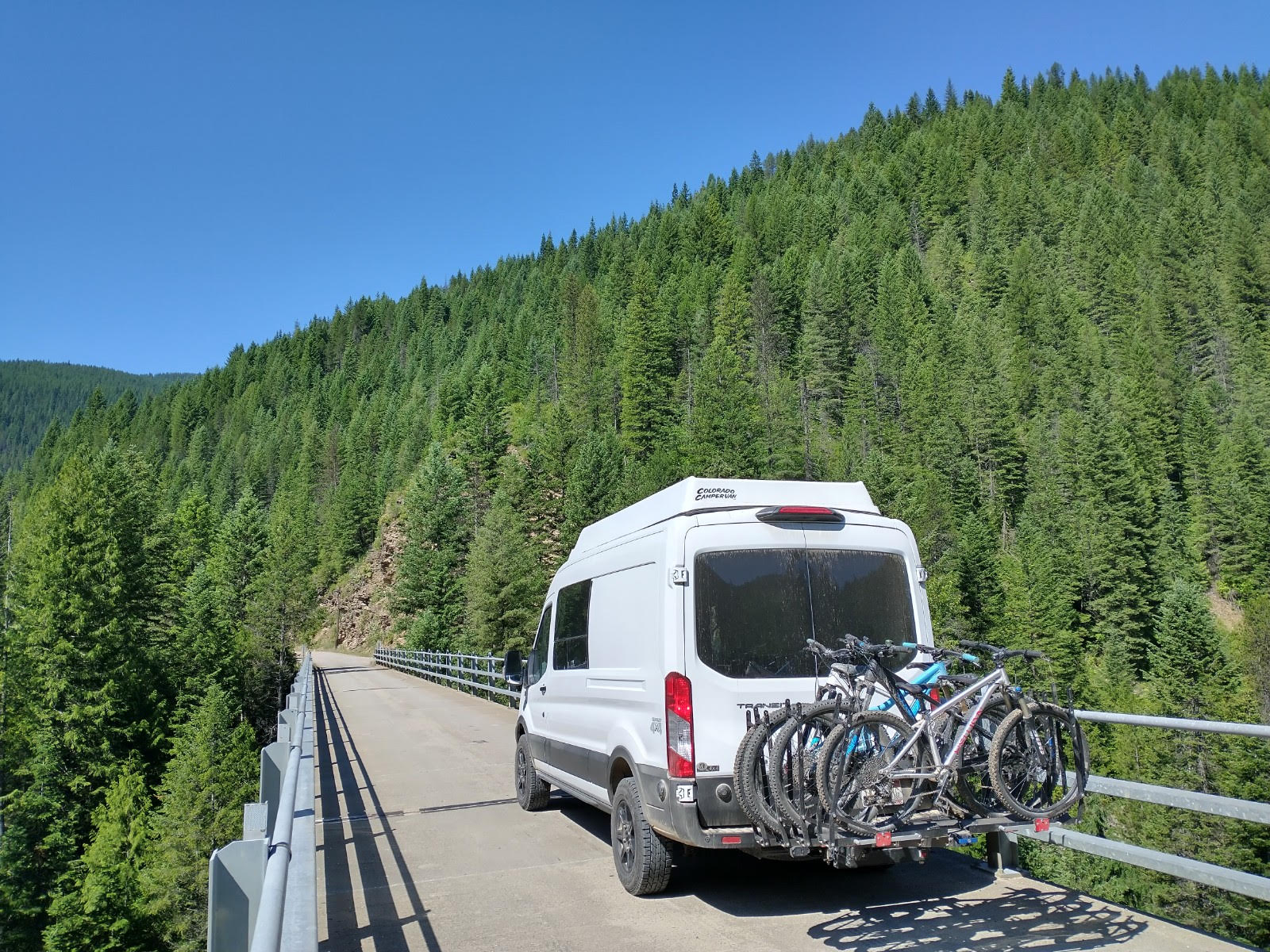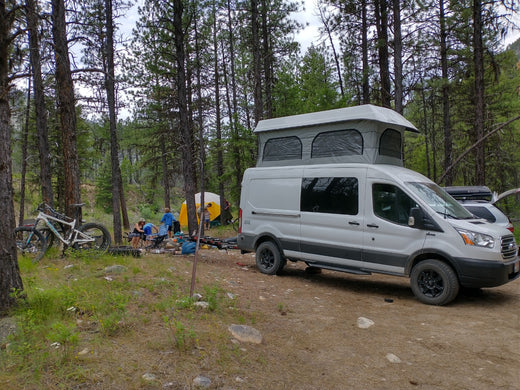Gas detection is a critical safety measure for campers, RVs, and caravans, as these confined spaces can allow carbon monoxide (CO) to accumulate rapidly. A Carbon Monoxide Detector designed specifically for campers is essential to protect occupants from the main sources of CO, such as generator exhaust and propane appliance emissions. In these small environments, a low-level carbon monoxide detector that alarms at 25 ppm within 60 seconds is preferable to generic CO detectors triggering at 70 ppm after 60 minutes. Investing in a sensitive CO alarm is particularly crucial for the elderly, young occupants, and those with pre-existing health conditions, as prompt gas detection can prevent potentially fatal CO poisoning in these vulnerable populations.
Pros |
Cons |
|
✅ Low level carbon monoxide detectors are a perfect fit for Carbon Monoxide Detector RVs and campers to provide early warning for low ppm CO exposure. ✅ Many Carbon Monoxide Detector for Campers are becoming more affordable. ✅ Waterproof CO detectors are versatile options that can also be used for boating and marine purposes. ✅ Low Level CO Detector FD alarm algorithms is 25 ppm after 60 seconds. |
⛔ Carbon monoxide can infiltrate an RV or camper quickly. ⛔ It can be difficult to track down the source of carbon monoxide. ⛔ Limited awareness of carbon monoxide poisoning in RVs and campers. ⛔ Carbon monoxide is a silent killer. |
Best Carbon Monoxide Detector for Camper
There are various Carbon Monoxide Detector for Campers that are low level carbon monoxide detectors which an excellent companion to your UL2034 compliant device (typically sold with your RV as a standard).
The top brands and most popular low level CO detectors are:
- Forensics Detectors Waterproof Low Level CO Detector
- Forensics Detectors Carbon Monoxide Detector Waterproof
- Sensorcon Waterproof Carbon Monoxide Detector
- CO Experts Low Level CO Detector
Why Is Carbon Monoxide a Problem in Campers?
RVs and campers, just like most recreational vehicles, are confined spaces that can be quickly filled with carbon monoxide. As a colorless and odorless gas, carbon monoxide is very dangerous and even deadly.
How Does Carbon Monoxide Enter an RV or Camper?
Carbon Monoxide from Generators
Carbon monoxide originates from exhaust coming from your built-in generator. This gas may enter your RV via panel holes, panel seams, cracks, window openings, and other entry ports that seem airtight. Studies have shown that obstructions, wind direction, exhaust attachment, and generator load are key variables in leading or redirecting carbon monoxide into your RV.

Carbon Monoxide from Propane Appliances
Carbon monoxide can be generated from gas heaters, water boilers, gas cooking appliances, and portable propane camping stoves and grills. When cooking, make sure to open a window or door for good ventilation. This simple action ensures carbon monoxide venting and that there is enough oxygen for proper propane combustion.

Carbon Monoxide from Exhaust Obstructions
Another hazard for RVs and campers is high grass, weeds, snowbanks, buildings, or other obstructions that may redirect exhaust gas back into the vehicle. Wind direction changes can also assist in CO entering the RV or camper.

Carbon Monoxide from Neighboring Generator Exhaust
Close proximity exhaust from a neighbor's generator can make its way into your camper. With the right conditions - change in wind direction, open windows, or exhaust output quantity - this problem may occur quickly with no warning.

Do People Die from Carbon Monoxide in RVs and Campers?
Yes they do.
The CDC estimates at least 430 people die in the U.S. from accidental carbon monoxide poisoning, with many cases in RVs, campers, trailers, and boats. Some examples of dangerous CO exposure in RVs and campers are listed below:
- Three men died and two others were in critical condition after a nearby generator led to deadly levels of carbon monoxide in their camper.
- A man was found unconscious inside his RV without any electricity as a result of a malfunctioning propane heater.
- 5 died died in their sleep when fumes from a generator seeped into their rented RV.
Where Should I Place the CO Detector in My RV or Camper?
There is a lot of misinformation about where to place a CO detector. Some sources say to place it high on the ceiling while others say to place it low because carbon monoxide is a heavy gas. Both are incorrect.
Carbon monoxide gas mixes evenly with air because the two have nearly the same density. This has been scientifically proven in various literature studies. It would be reasonable to place a CO alarm at any height.
However, noting that most deaths from carbon monoxide occur when occupants are sleeping, it is best to keep your CO detector as close to your sleeping area as possible.
The actual height installation is only important for practical reasons, such as the potential to be tampered with by kids and pets or inadvertently being bumped.
Other tips include:
- Do not install in areas where the temperature is colder than 40°F (4.4°C) or hotter than 100°F (37.8°C), it will stress the CO sensor and may reduce its lifespan. When storing your RV for the season, remove the CO detector and keep it in your home if extreme temperatures are expected.
- Do not install near vents, flues, or any air ventilation openings.
- Do not install near ceiling fans, doors, windows, or areas directly exposed to the weather where external "fresh" air, water, or rain can reach the alarm.
- Do not obstruct the vents located on the alarm. Do not place the alarm where drapes, furniture, or other objects block the flow of air to the vents.
Should I Install a CO Detector in My Mobile Food Truck?
Yes you should.
Although food trucks are well-ventilated, having a CO detector is an excellent idea to track your CO levels while cooking.
Below is a picture of a low level CO detector donated to a food truck by Dr.Koz from Forensics Detectors.

What Should I Do if My Carbon Monoxide Detector triggers an Alarm?
You should immediately evacuate to the outdoors and seek medical attention. If you are able to, shutdown all fossil fuel burning sources.
If the CO source is not apparent, seek mechanical help to determine the source and leakage path.
It Gets Very Hot and Cold in My RV, Will this Affect the CO Detector?
If your RV or camper is stored throughout the year in freezing or scorching temperatures, remove the CO detector and store it at room temperature. If it is exposed to extreme temperatures for a prolonged period of time, the detector may malfunction.
How Do I Know if I Am Breathing Carbon Monoxide?
According to the CDC, carbon monoxide symptoms include:
- Headache
- Dizziness
- Weakness
- Upset stomach
- Vomiting
- Chest pain
- Confusion.
- High levels of CO can lead to unconsciousness or even death.
Will a Low Level CO Detector Alarm Faster than a Normal CO Detector in My RV?
Yes it will.
Your regular RV carbon monoxide detector complies with NFPA 1192 / RVIA requirements, which includes the UL2034 alarming sequences.
The Forensics Detectors low level carbon monoxide detector is programmed to alarm much faster than a generic UL2034 CO detector. For example, an ordinary CO detector alarms at 70 ppm after 60 minutes. A low level carbon monoxide detector will alarm at 25 ppm after 60 seconds.
The video below shows this difference.
What Is the Difference Between a Low Level CO Detector and Ordinary CO Detector?
An ordinary CO alarm purchased from Costco or Home Depot is compliant with UL2034. The CO alarms in 60 minutes after exceeding 70 ppm.
In comparison, the FORENSICS low level CO detector triggers an audible alarm when carbon monoxide exceeds 25 ppm (for 60 seconds).

What Are Acceptable Carbon Monoxide Concentration Levels in a Camper?
No standards for CO have been agreed upon for indoor air within your RV or camper. It can be confusing because various agencies, departments, and organizations have different recommended exposure levels.
We believe any leakage or accumulation of carbon monoxide is problematic within your camper or RV. It is no different than a small water leak in your home. In either case, it is just a matter of time before a pin-hole leak become larger. Address the problem immediately.
However, there are some guidelines that can be extrapolated for personal safety. Below is a table that summarizes the carbon monoxide exposure limits:
Agency |
Limits |
WORLD HEALTH ORGANIZATION (WHO) |
9 ppm average over 8 hours |
ENVIRONMENTAL PROTECTION AGENCY (EPA) |
9 ppm average over 8 hours |
The American Society of Heating, Refrigerating and Air-Conditioning Engineers (ASHRAE) |
9 ppm average over 8 hours |
National Institute for Occupational Safety and Health (NIOSH) |
35 ppm average over 10 hours 200 ppm ceiling value |
Occupational Safety and Health Administration (OSHA) |
50 ppm average over 8 hours |
American Conference of Governmental Industrial Hygienists (ACGIH) |
25 ppm average over 8 hours |
CO Detector Alarming Protocol
|
> 70 ppm (60 to 240 minutes) > 200 ppm (10 to 50 minutes) > 400 ppm (4 to15 minutes) |
CO Detector Alarming Protocol
|
> 50 ppm (60 to 90 minutes) |
Forensics Low Level Carbon Monoxide Detector |
> 25 ppm (1 minute) |
Can I Leave My Carbon Monoxide Detector in My Camper Throughout the Year?
- If you are storing your camper in extreme conditions, remove the carbon monoxide detector to prevent malfunctions.
- Store your low level CO detector at normal room temperature - about 70F with 50%RH (well within operating specifications).
- Store it away from electromagnetic or magnetic sources, such as phones.
- Store it in a clean environment with no dust or particles.
- Store it away from any exhaust gas, concentrated vapors, or harsh chemicals.
- Clean the casing of your detector with a damp cloth.

How Do I Test My Carbon Monoxide Detector for Camper?
To test your carbon monoxide detector see: "How do I test my Carbon Monoxide Detector?
To summarize, there are three ways:
- Spray carbon monoxide test gas, or bump gas, onto the detector.
- Try the wood stick method. It is easy to perform at home with no special equipment. See here.
- Press the TEST button on your CO detector following the instruction manual. However, pressing the the TEST button only helps to verify the electronic and LED and buzzer alarm operation. Exposing the CO detector to actual carbon monoxide is the only way to truly confirm operation.
Can You Smell Carbon Monoxide While Camping?
No, carbon monoxide is completely odorless and undetectable by human senses, making it particularly dangerous. Always use carbon monoxide detectors while camping.
Best Carbon Monoxide Detectors Tips for Campers?
- Inspect your generator exhaust system, make sure everything looks normal. Do this before every outing. Part of the exhaust may break-off, crack, or be destroyed from debris when driving. Most exhaust from built-in generators is directed under the vehicle and emitted to the side of your RV.
- Park your RV or camper away from any sources of carbon monoxide. Think about what will happen if the wind changes or in other conditions.
- Use generator exhaust extenders that direct exhaust high above the RV.
- Avoid leaving windows and roof vents open when in close proximity to other exhaust systems.
- Be smart when using propane or butane heaters and appliances, ensure there is venting and fresh air entering your RV when appliances are running.
- Never use the range burners or oven to heat the RV, this will introduce carbon monoxide into the living space.
- When cooking with the range burners, use the fan and always leave a window or door open for fresh air ventilation.
- Change your CO detector batteries yearly. Press the test button monthly. Perform a real CO detector test twice per year.
- Never use a portable generator inside a tent or camper. If using a portable generator ensure it is 20 feet from any window, door, or vent.
- Never burn charcoal in your RV or camper.
- Avoid using your generator at night. In some cases, power is required for AC, CPAC, or oxygen machines. Please make special provisions such as alternative battery power sources.
- Park your RV so the wind will help carry the fumes away from rather than towards the RV - be attentive to weather and wind changes.
Final Words
Gas detection is of utmost importance in RVs and campers, as these confined spaces allow carbon monoxide to accumulate rapidly. The primary sources of CO include generator exhaust, propane appliance emissions, and close proximity exhaust from neighboring vehicles, making reliable gas detection crucial for occupant safety. In these small environments, a low-level carbon monoxide detector that alarms at 25 ppm is preferable to generic CO detectors triggering at 70 ppm after 60 minutes. Investing in a more sensitive alarm ensures fast and effective protection against low levels of carbon monoxide, which can be particularly dangerous in confined spaces. A low-level CO detector is a wise addition to any RV or camper, providing enhanced gas detection capabilities and ensuring the safety of all occupants.
About The AuthorDr. Kos Galatsis ("Dr.Koz") is the President of FORENSICS DETECTORS where the company operates from the scenic Palos Verdes Peninsula in Los Angeles, California. He is a subject matter expert on gas sensor technology, gas detectors, gas meters, and gas analyzers. He has been designing, building, manufacturing, and testing toxic gas detection systems for over 20 years. 
Every day is a blessing for Dr. Koz. He loves to help customers solve their unique problems. Dr. Koz also loves spending time with his wife and his three children going to the beach, grilling burgers, and enjoying the outdoors. Read more about Forensics Detectors here. Email: drkoz@forensicsdetectors.com |

